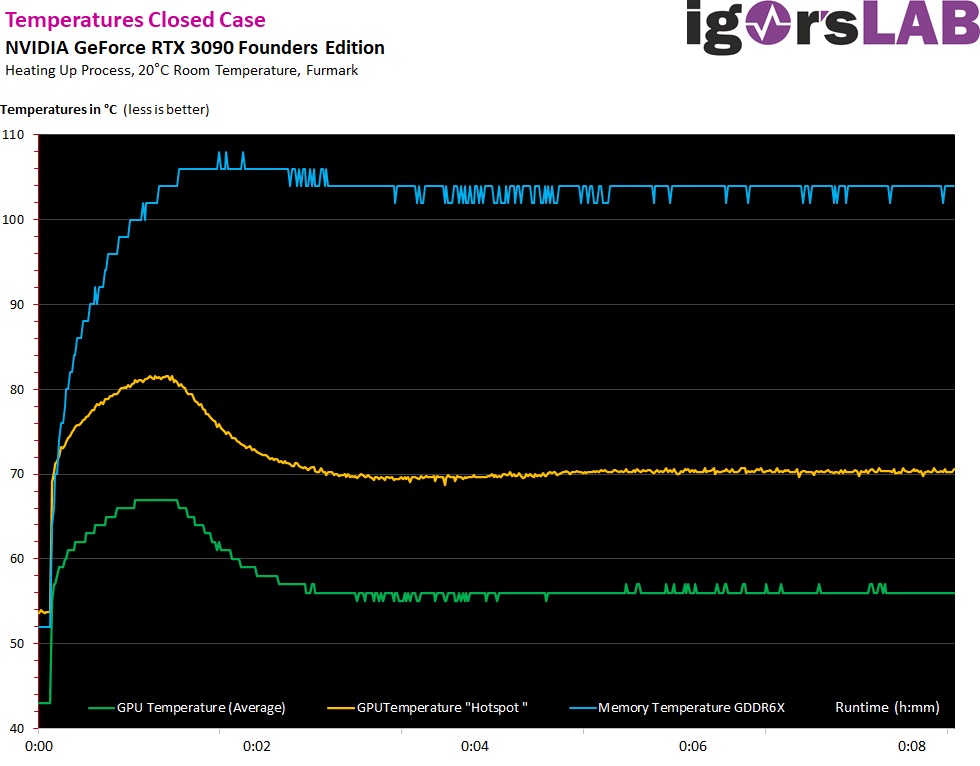HWiNFO Will Soon Sense Peak 'Hotspot' Temp of Nvidia GPUs
Average temperatures are so boring
To date, temperature monitoring tools such as HWiNFO have only been able to display the GPU temperature of Nvidia GPUs as an average of its sensors, but that's about to change. According to Igor Wallossek, who recently got his hands on an unreleased beta of HWiNFO, the temperature and sensor monitoring program's next beta will come with a feature to monitor the Hotspot temperature of Nvidia GPUs.
What is Hotspot and Why Does it Matter?

Nvidia's GPUs currently report the temperature to monitoring programs as a single value — GPU Temp, or whatever your program may call it. In reality though, the GPU doesn't have just one temperature sensor on it smack in the middle. Instead, the GPU has many sensors spread across its topography, and it averages the results for the reported number.
As you can imagine, the temperature across the sensors can vary wildly depending on the load on the specific area, the flatness of the GPU surface and the cooler, the mating between the two, the thermal grease used — you get the idea. As such, it's actually quite interesting to know what the peak temperature is that's recorded on the GPU.
Don't AMD GPU's Already Report this Temperature?
That's correct. AMD's new RDNA2 GPUs, which include the RX 6800, RX 6800 XT, and RX 6900 XT graphics cards, already report this information to HWiNFO. But contrary to AMD, Nvidia has been very hush-hush about this information.
Given that the data is soon to be public, there is a good chance that Nvidia already uses it in its boost algorithms along with thermal safeties, throttling behavior, and the like. And perhaps Nvidia is being a bit more forthcoming with low-level details.
Will Knowing the Hotspot Temperature Lead to Higher Performance?
Well, not really. At least for most of us. If you buy a GPU off the shelf, install it in your system, and just want to game, chances are you don't really care about this information — nor will knowing it affect your experience.
But if you're someone that likes knowing how your hardware performs and overclocks, it can be useful data. It won't immediately help you get better overclocks, as an unstable overclock is still unstable. However, it can (theoretically, at least) help you figure out whether your cooler is seated properly on the GPU, or whether it would be beneficial to reapply thermal paste.
Get Tom's Hardware's best news and in-depth reviews, straight to your inbox.


There will always be a temperature difference between the average and the hottest spot — that's a given that no amount of trickery with the cooler can change — but you can attempt reseating and repasting the cooler a few times to try and get the temperature differences between the two to reduce. Potentially, by reducing the difference and somewhat evening out the temperature across the surface of the GPU, you should have a good idea of how well your cooler is seated, potentially allowing better overclocks.
Of course, for this to work we'll need a lot more data than a single sample. Tons of users will need to submit data for various different GPUs, and with that data you should be able to get a pretty good idea of what a healthy Hotspot temperature looks like vs. one where the cooler is not properly seated — even if the average temperature appears to be in check.
Igor's tests show, on an MSI RX 6800 XT Gaming X, a temperature delta of 12–20C between the average and the hotspot. Meanwhile, with the new unreleased beta, Igor found a temperature delta of between 11 and 14 degrees on an RTX 3090 Founders Edition. This might lead to the assumption that the Nvidia card has a better cooling solution, but we wouldn't jump to conclusions — how the average is calculated, the GPU topography, and the locations and quantity of thermal sensors are all bound to be different, so a direct comparison is not possible.
Igor did not specify what Nvidia GPUs will have this information presented, but it's safe to assume that the older your GPU, the less likely it is to support the Hotspot monitoring in the next beta of HWiNFO. It may be for all Ampere GPUs, or only the GA102 (3080 and 3090) cards, or perhaps it will even work on older Turing GPUs as well. We'll find out once the public beta gets released.
Niels Broekhuijsen is a Contributing Writer for Tom's Hardware US. He reviews cases, water cooling and pc builds.
-
jpe1701 I may be wrong because I haven't used it in a while but I think my 5700xt shows this too.Reply
